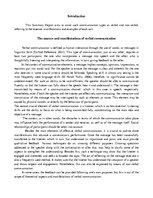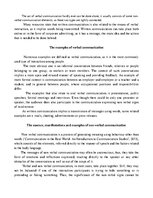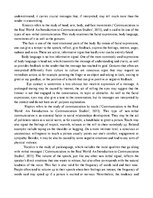-
Verbal and Non-Verbal Communication
Vocalics is the study of paralanguage, which includes the vocal qualities that go along with verbal messages (‘Communication in the Real World: An Introduction to Communication Studies’, 2013). The volume of the speech, just like any other non-verbal signal, reflects the speaker's direct emotions that one wants to release, but also often corresponds with the natural loudness of the voice. This fact is also valid for the frequency of words said and their tone. People often tend to volume up to their speech when their feelings are intense, the frequency of words said may speed up if a person is excited or nervous. Nevertheless, the tendency and interpretation of such signs may be analysed theoretically, but cannot be relevant to all cases and individuals, as too many factors are influencing that.
The performance of communication is also influenced by the factors that proxemics studies - it examines how space and distance influence communication. Personal space if violated and done against once will may provoke negative emotions and spoil the communication, as it is unwanted.
The comprehension of all the non-verbal means of communication is what is widely spread in our everyday life, and its synthesis with verbal aspects makes the most vital process of social interaction between people firm and full-fledged.
…
This Summary Report aims to cover such communication types as verbal and non-verbal, referring to the essence, manifestations and examples of each sort. Verbal communication is defined as human interaction through the use of words, or messages in linguistic form (Oxford Reference, 2021). This type of communication, just as any other, requires at least two participants, the one who incorporates a message into speech and the other, who is thoughtfully listening and interpreting the information, in turn, giving feedback to the teller.




